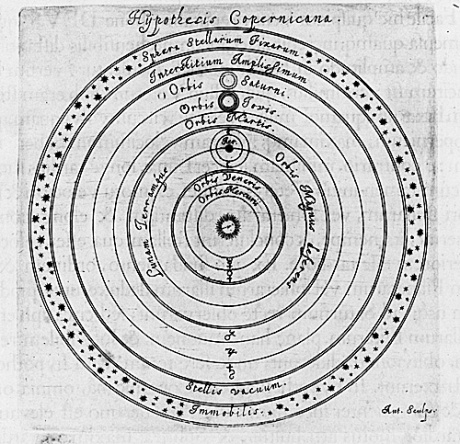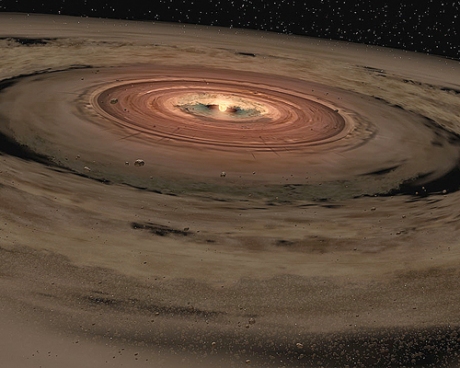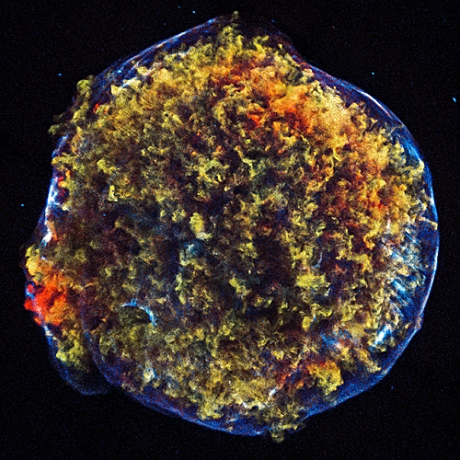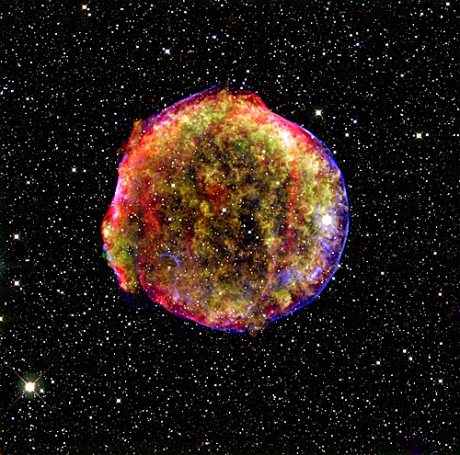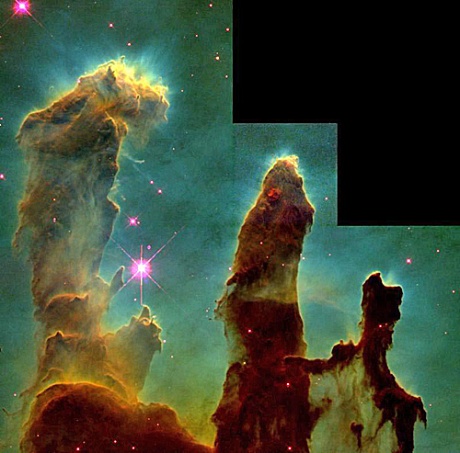482. Inviting the Stars to Speak for Themselves
April 13, 2015
In the beginning, Earth was thought to be the center of the universe. Plato, Aristotle, and Ptolemy said so, along with a great many others, so till the end of the Middle Ages it had to be true (Photo: Peter Apian, Cosmographia):
Then Copernicus (1473-1543) came along and proposed that the sun, not the Earth, held the honor of central place (Photo: Wikimedia):
Now in the Space Age the universe has no center; or, rather, every star is the center of its own orbital system. Here is an artist’s rendition of what such a stellar disk might look like (Photo: NASA/JPL-Caltech/T. Pyle (SSC)):
Here is an actual radio-telescope array image of a planetary disk about its central star in the constellation we call Taurus. Planets are thought to have swept up the material in the gaps between rings (Photo: Atacama Large Millimeter Array/ESO/NAOJ/NRAO, NSF, Chile):
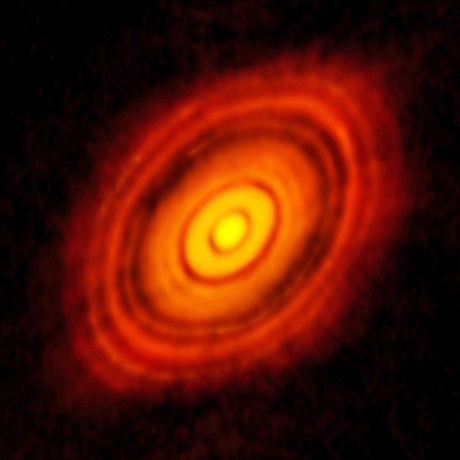
A radio-telescope image of actual planetary formation around a young star in the constellation Taurus.
The implosion of stars in on themselves when their gravitational force exceeds the radiative pressure from their fading nuclear engines—that event is what we call a supernova, an extremely bright star that fades in a few weeks’ time. This photo of a supernova that was witnessed by Tycho Brahe was made by the Chandra X-ray Observatory (Photo: NASA/CXC/SAO):
This is the same supernova that Tycho saw in 1572 as rendered in a combination of different wavelengths of visible light (Photo: NASA/Prof. John P. Hughes, Dr. Jeonghee Rho, Dr. Oliver Krause):
This is a nebula in our southern constellation Carina, a region of star formation fueled by condensing clouds of gas and dust pressed together by the force of gravity. Here is a modern view of creation of the universe, one speck of dust at a time, not as an eternal harmony of perfect motion driven by a prime moving god (Photo: NASA/ESA/M. Livio & Hubble 20th Anniversary Team (STSci)):
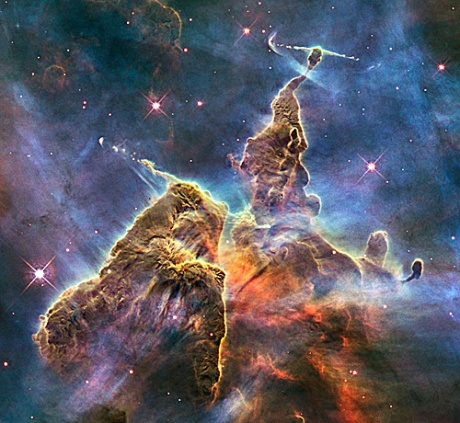
A Region in the Constellation Carina Where Clouds of Gas and Dust are Forming New Stars Under Gravitational Pressure.
Clouds of gas and dust, remnants of supernova explosion(s), known as the Pillars of Creation. Stars are literally being formed in the pillars of gas and dust shaped by gravity. This is also known as the Eagle Nubula (Photo: NASA/ESA/Hubble Heritage Team (STScl/AAURA)/J. Hester, P. Scowen (Arizona State Univ.)):
The So-called Pillars of Creation, Columns of Gas and Dust Being Compressed into New Stars.
We must take such images as these eight into account in finding meaning in our non-universe of today. That is, in a cosmos that is far more complex than the simple and idealistic image of one-turning (which is what our word “universe” means or implies.)
That old style universe is based on an illusion that projects both Earth’s rotation about its axis and orbit about the sun onto the stars, which are wholly innocent of forcing that illusion upon us. The illusion is our own doing, and has been for more than six thousand years.
Creation is ongoing today, and is a much messier affair than Plato could suggest in his philosophy. The cosmos is not what we think it is; it is what it is in itself. Our assignment, should we accept it, is to bring ourselves into as close agreement with that fact as we are able, given our habitual frailties and fallibilities of mind.
This particular post brings to an end my series of posts illustrating human engagements in the case of baseball, Roget’s Thesaurus, and the stars. My job from here on is to discuss the way-stations along my introspective journey as illustrated in these recent posts, then present a brief summary of what conclusions I have been able to draw.

